Sorted by date Results 26 - 50 of 132
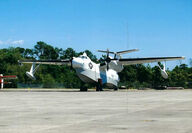
Glenn Luther Martin (1886-1955) taught himself to fly in 1909 in a homebuilt pusher. He set up his first aircraft manufacturing plant in 1911 at Santa Ana, California. Not only did he build airplanes, but acted in the 1915 silent movie The Girl of Yesterday as a pilot opposite Mary Pickford. Over the course of Martin's career, he employed such names as William Boeing, Donald Douglas, Lawrence Bell, and James McDonnell. Martin is often connected to bombers, but beginning in the late 1920's it...
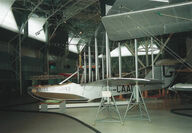
The Liberty powered HS-1L and HS-2L series was the only American designed and built aircraft issued to U.S. forces in France during World War I. Beginning in May 1918, HS-1L and HS-2L flying boats arrived by ship for anti-U-boat operations and were assigned to 10 U.S. Naval Air Stations. The first patrol was flown on 13 June 1918. Of the 182 aircraft delivered, 19 were the longer wing HS-2L capable of carrying a larger weapon load. Since Curtiss lacked enough production capacity, the HS series...
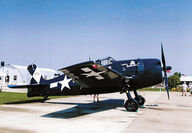
Early Sunday morning I negotiated my way around the southern part of the Twin Cities to avoid the orange barrels, cones, and hulking construction equipment. Traffic was light. I crossed the river at Hudson and settled the Jetta into cruising mode for Mauston. From there, it was on to Ripon. The Wisconsin sky was noticeably bluer and the landscape greener. Smoke seemed absent. After checking in at the old hotel in Ripon, I headed for Highway 44. Through the stoplight, heading northeast toward...
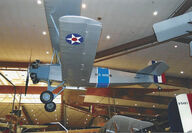
The concept of mating an airplane with an airship was trialed as early as World War I. On 26 January 1918, an Albatros D. III was released from Zeppelin L-35 (LZ-80). The pilot flew the fighter to a successful landing. No method of recovering to the airship was tried. Further trials by the British and later the United States followed. The British experimented with launching a Sopwith Camel (unpiloted) from airship R-23 in 1918 and later a piloted de Havilland Hummingbird and Gloster Grebe from...
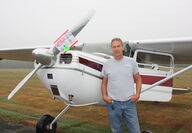
Homebuilt Kit Champion – Bronze Lindy Lee Hanson Brooklyn Park, Minnesota Van's RV-14A, N11VF Vintage Customized Aircraft Runner-Up Benjamin Redman Faribault, MN 1940 Waco UPF-7, N164 Vintage Custom Class B (86-150 hp) Small Plaque David Smith Milaca, MN 1950 Cessna 170A, N9775A Warbirds-Reserve Grand Champion: World War II Jordan Deters/CAF Minnesota Wing Vultee BT-13A Valiant, N52411 Gold Wrench, CAF Minnesota Wing Warbirds-Grand Champion: Post – World War II James and Patrick Harker For...
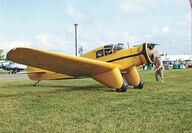
This month's mystery, the Aeronca Model LB, was literally washed away. Founded on 11 November 1928, the Aeronautical Corporation of America, based in Cincinnati, Ohio, was the first company to manufacture commercially successful general aviation aircraft. It had the backing of the wealthy Taft family. Located at Lunken Field, Aeronca suffered a major disaster in 1937 when the Ohio River flooded the airport. The Aeronca factory was destroyed and tooling, inventory, and blueprints for the...
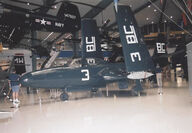
James S. McDonnell (1899-1980) qualified as an Army pilot at Brooks Field. With a master's degree from MIT, he worked for Ford, Martin, and Hamilton, before forming McDonnell Aircraft Corporation in St. Louis on 6 July 1939. McDonnell manufactured the Fairchild AT-21 crew trainer under license, but also designed the XP-67 Moonbat fighter for the Army. The XP-67 was not a success, but on 7 January 1943, the Navy ordered the XFD-1 Phantom, which, as the FH-1, became the Navy's first pure jet to...
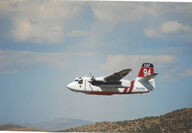
In August 1989, I attended the Abbotsford Airshow in British Columbia. It was my introduction to the use of the Grumman Tracker as a firebomber. Three Conair Trackers, each with a different color water, made a formation pass over the runway, followed by a DC-6. Conair later modified its Trackers with PT-6 turboprops to create the Firecat with 870 gallons of retardant. The state of California began its use of Cyclone engine Trackers in 1973, each with an 800 gallon capacity. These were designed...
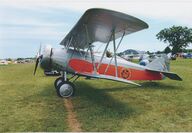
Between the World Wars, Wichita was the center of aviation in the United States. In January 1925, Clyde Cessna, Lloyd Stearman, Walter Beech, and Olive Ann Mellor (later Mrs. Olive Ann Beech), along with Walter Innes, formed Travel Air Manufacturing. By 1929, Travel Air had 650 employees and had built over 1800 aircraft. Most were two or three place biplanes designed to compete with or replace surplus WWI aircraft. One of the most famous was the Travel Air 4000. Early Travel Air biplanes used su...
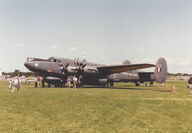
The red-white-red tips began their slow meshing. Gradually, with the deep growl of the four 2450 hp Rolls Royce Griffon 57A's increasing, the contra-rotating blades became a mad blur. If you suffered from migraines, you wouldn't want to watch too closely or too long. The Holman Field ramp was jammed with spectators and cameras. The long checklist took a while to complete, and finally, the huge blue-gray monster began to taxi off the dried grass and swung ever so ponderously onto the asphalt...
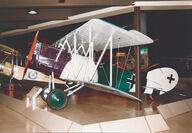
Pfalz Flugzeug-Werke was established in October 1913 to license build Morane-Saulnier monoplanes. From these, it evolved its own series of Eindeckers fitted with synchronized machine guns. Further license work followed with L.F.G. Roland D. II biplane fighters. In May 1917, Pfalz produced its own fighter design, the 160 hp Mercedes powered D. III. In the spring of 1918, it built its best fighter, the D. XII, which competed with the Fokker D. VII in the June 1918 Aldershof fighter competition....
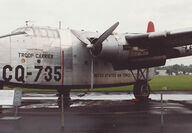
The Army Air Force needed dedicated transports, rather than adaptations of civilian airliners, to support airborne operations. These aircraft would have to carry large, sometimes bulky loads and be easy to load and unload. The wooden Curtiss C-76 Caravan and the stainless-steel Budd RB-1 Conestoga were designed with those needs in mind, but Fairchild got it right with its twin-boom C-82 Packet. Powered by a pair of 2100 hp Pratt & Whitney R-2800 radials, the Packet had a 2870 cubic foot cargo...
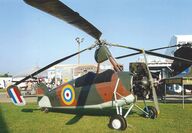
Military interest in the autogiro centered on their use for surveillance and liaison. Only the Japanese succeeded in putting autogiros into service, and these, the Kayaba Ka-1, were for anti-submarine work from the escort carrier Akitsu Maru over the Tsugara and Korean channels. The Kayaba carried a pair of 132 pound depth charges. The U.S. Army tested the Kellett YG-1B for artillery spotting in the mid-1930s, but found light planes would serve better. The British Avro Rota, a license Cierva...
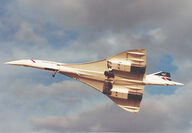
With thousands of other EAA members and guests, I waited for the arrival. Minolta XG-7, 300 mm lens, skylight filter, Fuji color film all checked. Late afternoon. July 1985. It was unusually and somewhat ominously quiet for Wittman Field. Announcement followed announcement all day, reporting so many miles out, over such and such check point. The winds had died. There was a bit of late day haze. I was at the north end of Three-Six, about 500 feet from the runway. The line of cameras and...
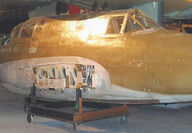
In 1918, Kawasaki heavy industries established an aircraft and engine division. Between the wars, it produced license versions of the French Salmson 2A2 recon biplane and the Dornier Wal flying boat. Richard Vogt, later of Blohm und Voss, also designed aircraft for the Japanese Army. During WWII, Kawasaki was known for the Ki-61 fighter, the Ki-48 bomber, the Ki-56, a license-built version of the Lockheed 14 transport, and the Ki-45 Toryu twin engine fighter. Intrigued by the concept of a...
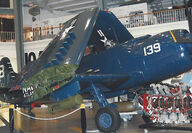
First flying on 26 August 1944 as the XBTM-1, the Mauler was one of four single-seat bomber/torpedo planes ordered for testing by the Navy in 1943. The Curtiss XBTC-2 and the Kaiser-Fleetwings XBTK-1 didn't make it beyond the prototype stage, but the Douglas XBT2D-1, as the AD and in 1962, the A-1, became the famous Skyraider. As for the Martin, it had to settle for second place. Designed around the huge 28 cylinder 3000 hp Pratt & Whitney R-4360 Wasp Major, the "Able Mable" was a load carrier...
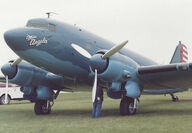
An ongoing series by Tom Lymburn "Ladies and gentlemen, to your right, on final approach, the greatest transport plane in history. Cameras ready! Please welcome, the Douglas DC-3!" She came "over the fence" flaring for runway niner-right. Gear down, flaps down, the late morning sun sharp on her pseudo-Navy prewar two-tone blue paint scheme. Red and white tail stripes, star and meatball insignia, chrome plated prop blades flashing in the sun. Not exactly stock, she had oversized spinners,...
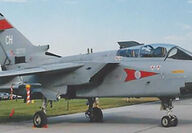
The Panavia consortium, formed in March 1969, was charged with the development of the Multi-Role Combat Aircraft (MRCA) for Britain, Germany, and Italy. From this program came the variable geometry strike and recon aircraft known as the IDS. Britain also required a long-range all-weather interceptor. This version is known as the Air Defense Variant or ADV. The prototype ADV first flew on 27 October 1979 and 18 pre-production F. Mk. 2 Tornados followed. The definitive F. Mk. 3 flew in November...
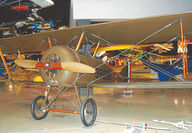
The Thomas-Morse Aircraft Corporation of Ithaca, NY, built a series of single-seat advanced fighter trainers for the Signal Corps/Air Service beginning in 1917. The S-4B, with the unreliable 100 hp Gnome rotary, appeared in October 1917. Other than being a bit tail heavy, the Tommy had good flying characteristics. With production of the S-4C, power changed to the 80 hp Le Rhone. The Le Rhone was built under license by Union Switch and Signal Company of Swissvale, Pennsylvania. Capable of being...
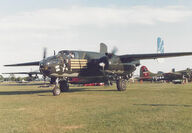
In three decades of air display announcing, I've been privileged to interview many members of what journalist Tom Brokaw called "The Greatest Generation." This has included members of the Flying Tigers (American Volunteer Group), Doolittle Raiders, Tuskegee Airmen, WASPs, aces, Medal of Honor winners, and veterans of the Berlin Airlift. Added to that, I've called over 200 types of aircraft in shows, from the Pietenpol Air Camper to the Lockheed F-117 Stealth Fighter. Antiques, classics, modern...
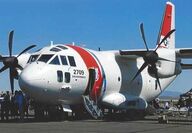
The C-27J is based on the Fiat G. 222 that first flew on 18 July 1970, and was delivered to Argentina, Italy, Libya, Nigeria, and Thailand. This Lockheed Martin/Alenia development with uprated engines, avionics, and other systems from the C-130J, took to the air on 25 September 1999. Technically called the Lockheed Martin Alenia Tactical Transport Systems, or LMATTS, initial orders were for Italy and Greece. Further aircraft were delivered to Australia, Bulgaria, Mexico, Romania, and the United...
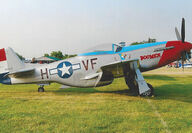
I like to walk the field ahead of time. Early morning is best – time to drink in the atmosphere and savor, however briefly, the newly mown grass, listen to the birds that swoop low over the runway and get my old Rockports damp with dew. Snuggled next to Battle Lake, just outside the town of 875 or so, about 20 miles east of Fergus Falls, is the only grass field I've called airshows at in three decades of announcing. A bit under 2800 feet by 200 feet with hangars and a corn field on one side a... Full story
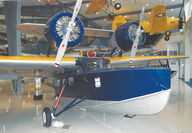
The Douglas Dolphin evolved from the Sinbad flying boat of July 1930. Looking like the 1929 Saunders-Roe Cutty Sark, the Sinbad was powered by a pair of 300 hp Wright J-5 Whirlwind radials. It carried two pilots and up to eight passengers. First flown in July 1930 from Santa Monica Bay, the Sinbad was sold to the Coast Guard and served until November 1939. The amphibious Dolphin, designed for military and civilian use, was based on the Sinbad. Between 1931 and 1934, 58 Dolphins were constructed... Full story
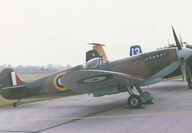
The Aero Shell Team snarled its way into the air. As usual, their formation was superb. Once the four Texans turned northeast, away from Runway 36, we resumed our conversation. "You've announced for years. What was your favorite formation?" I thought for a moment. Eight or nine people were gathered by the high wing Stinson trimotor's starboard Lycoming, some in the shade, others content to absorb the noon time sun. "Well," I thought out loud. "I did announce the Trimotor Gathering here in 2005.... Full story
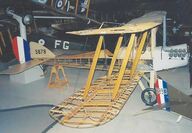
Fokker Fodder. Manfred von Richthofen shot down 19 B.E. 2 biplanes and his brother Lothar six. Werner Voss claimed 11. Too slow, poorly armed, and too stable for aerobatics, the Royal Aircraft Factory B.E. 2 appeared in 1912 and served until the Armistice on 11 November 1918. Over 3500 were built, serving on the Western Front, in the Aegean, Africa, Australia, India, Palestine, and Macedonia. On 13 August 1914, it became the first RFC aircraft to land in France. Designed with inherent stability... Full story